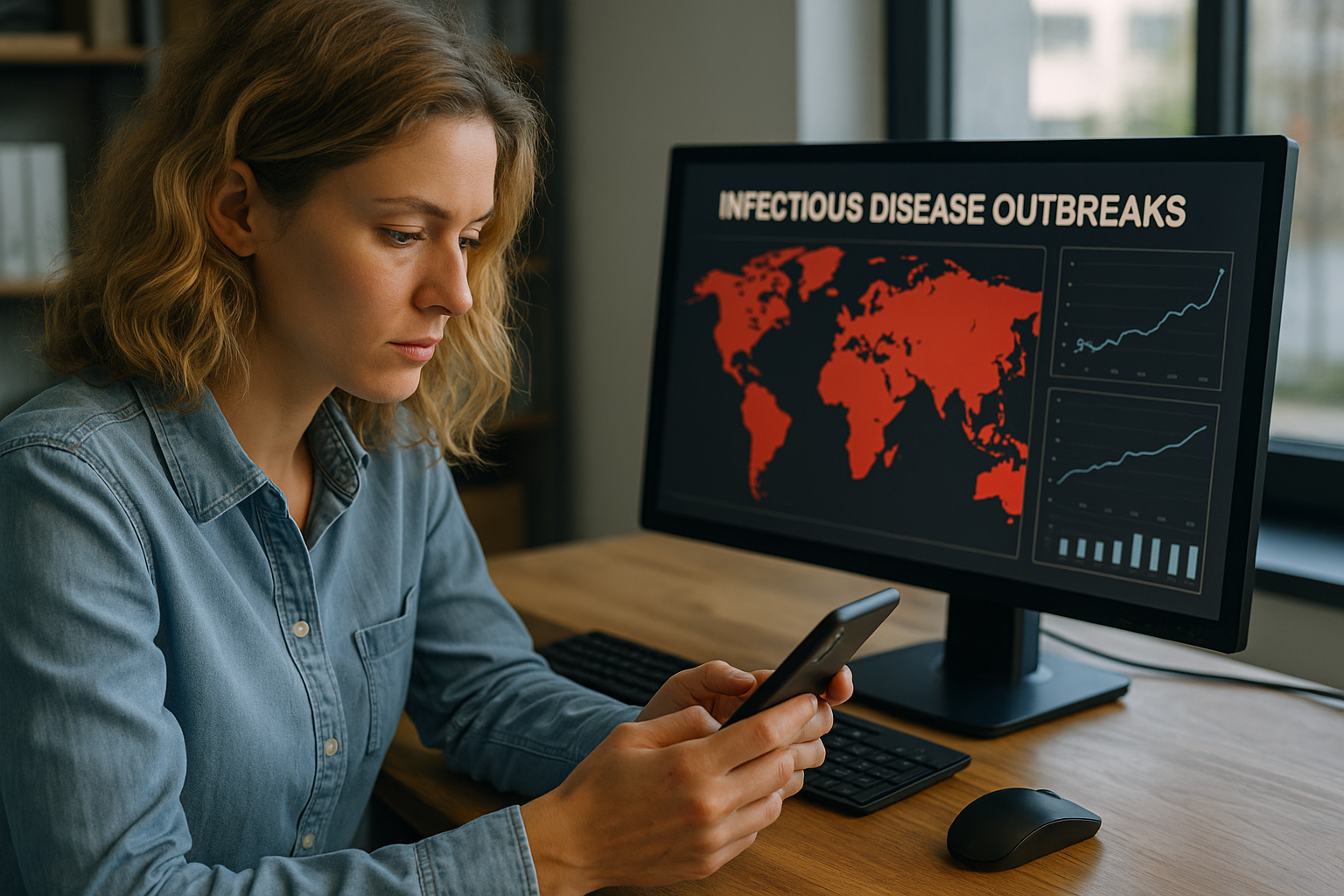Digital surveillance outperforms traditional methods in disease outbreak detection
Tools like Google Trends, Twitter (X), and other social media platforms surfaced as dominant data sources. Researchers observed that users tend to search or discuss symptoms and disease-related terms before visiting health facilities or before case numbers are formally reported. This behavioral trend enables real-time digital footprints to act as a proxy for impending outbreaks.

A new review published in the International Journal of Environmental Research and Public Health details how social media and digital data sources are reshaping global approaches to infectious disease surveillance. The study, titled “Early Warning of Infectious Disease Outbreaks Using Social Media and Digital Data: A Scoping Review,” shows that digital surveillance systems, particularly those using platforms like Google Trends and Twitter (now X), are capable of detecting outbreaks significantly earlier than traditional epidemiological systems.
The review maps out methodologies, data sources, performance metrics, and challenges of digital tools compared to conventional health monitoring. In doing so, it affirms that digital surveillance could be instrumental in containing public health threats more proactively, provided its limitations are addressed.
Can digital tools predict disease outbreaks before traditional systems?
The study analyses whether digital surveillance can detect infectious disease outbreaks earlier than conventional systems. The answer, based on over a decade’s worth of literature, is a resounding yes.
The review found that digital surveillance tools often provided lead times ranging from a few days to several weeks ahead of official case reporting. This time advantage was consistently noted in diseases like influenza, COVID-19, dengue, and Ebola. In numerous studies reviewed, the correlation between digital indicators, such as spikes in search queries or social media mentions, and actual case numbers was remarkably strong, frequently exceeding a correlation coefficient (r) of 0.8.
Tools like Google Trends, Twitter (X), and other social media platforms surfaced as dominant data sources. Researchers observed that users tend to search or discuss symptoms and disease-related terms before visiting health facilities or before case numbers are formally reported. This behavioral trend enables real-time digital footprints to act as a proxy for impending outbreaks.
Additionally, forecasting models, ranging from supervised machine learning and regression models to ARIMA and Bayesian frameworks, were able to interpret digital activity to predict epidemic patterns with notable precision. The flexibility and speed of these digital systems give them a significant edge over traditional surveillance, which often lags due to bureaucratic and logistical constraints.
What platforms and models are most effective?
The review delves into the platforms and modeling techniques that yield the most consistent and accurate outbreak predictions. Among digital platforms, Google Trends and Twitter stood out as the most frequently utilized. Google Trends was praised for its structured data and global reach, while Twitter offered valuable real-time, location-specific information.
From a modeling perspective, the reviewed studies employed a mix of time series analysis, statistical methods, and machine learning techniques. ARIMA (AutoRegressive Integrated Moving Average) models, supervised regression, and Bayesian inference models were among the most commonly applied. These models were capable of analyzing trends in digital activity and converting them into meaningful epidemiological signals.
Furthermore, hybrid approaches that combine multiple platforms and methodologies appeared to outperform single-source systems. For example, integrating Google Trends with Twitter data or using ensemble learning methods enhanced predictive accuracy and reduced false positives. Despite platform and model variability, most systems demonstrated a high level of reliability when benchmarked against official surveillance data.
However, the performance varied depending on disease type, geographic region, and platform accessibility. Diseases with prominent seasonal trends like influenza saw better predictive outcomes, whereas emerging diseases with sparse digital footprints posed a greater challenge. Moreover, internet penetration and language biases in certain regions influenced the effectiveness of digital data collection.
What are the key limitations and future considerations?
While the study highlights the transformative potential of digital surveillance, it also identifies critical limitations. Key among them is the problem of data noise and misinformation. Social media platforms are rife with user-generated content, some of which may be inaccurate, speculative, or unrelated to actual health events. This noise can distort predictive models unless carefully filtered and validated.
Another challenge is the issue of representativeness. Not all population groups are equally active online, and digital surveillance may inadvertently exclude low-connectivity or underserved regions. This bias can skew results, leading to underreporting or misinterpretation of emerging health threats.
Privacy and ethical concerns are also central to the debate. Mining user data from digital platforms raises questions about consent, data ownership, and the balance between public health utility and individual rights. The authors emphasize the need for transparent policies and legal frameworks to regulate data use without compromising personal freedoms.
Lastly, the lack of standardization in evaluation metrics and model validation hinders broad adoption. Most digital surveillance models are evaluated independently, often using different benchmarks, making cross-comparison difficult. The study calls for the development of unified performance metrics and validation protocols to ensure consistency and scalability across regions and disease types.
A roadmap for integrating digital and traditional surveillance
Digital surveillance, as the study concludes, should not be viewed as a replacement for traditional systems but as a complementary tool capable of enhancing early response capabilities. To maximize its potential, the study recommends integrating digital platforms into existing public health infrastructure through collaborative frameworks involving governments, tech companies, and research institutions.
Policymakers are encouraged to invest in data literacy, digital infrastructure, and cross-sectoral partnerships. A dual approach, leveraging both digital and traditional data streams, could drastically improve outbreak prediction, resource allocation, and crisis communication during public health emergencies.
- READ MORE ON:
- digital surveillance for disease outbreak
- infectious disease outbreak prediction
- early warning systems for pandemics
- disease forecasting using social media
- real-time disease tracking
- digital health surveillance systems
- social media health trends
- global health data analytics
- effectiveness of digital surveillance tools in healthcare
- FIRST PUBLISHED IN:
- Devdiscourse










